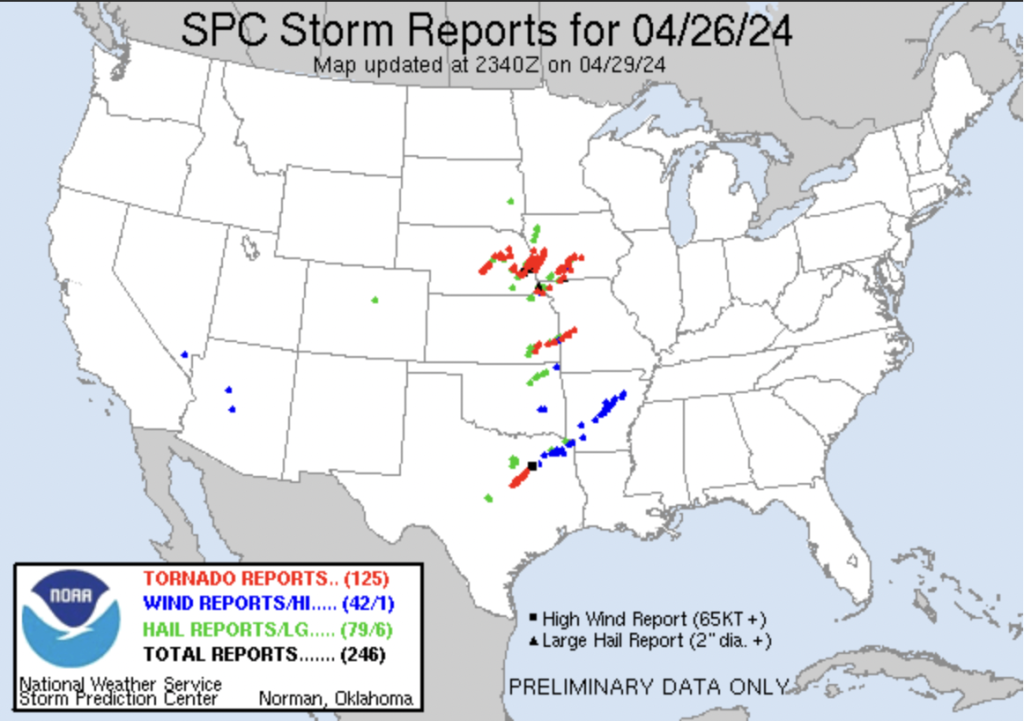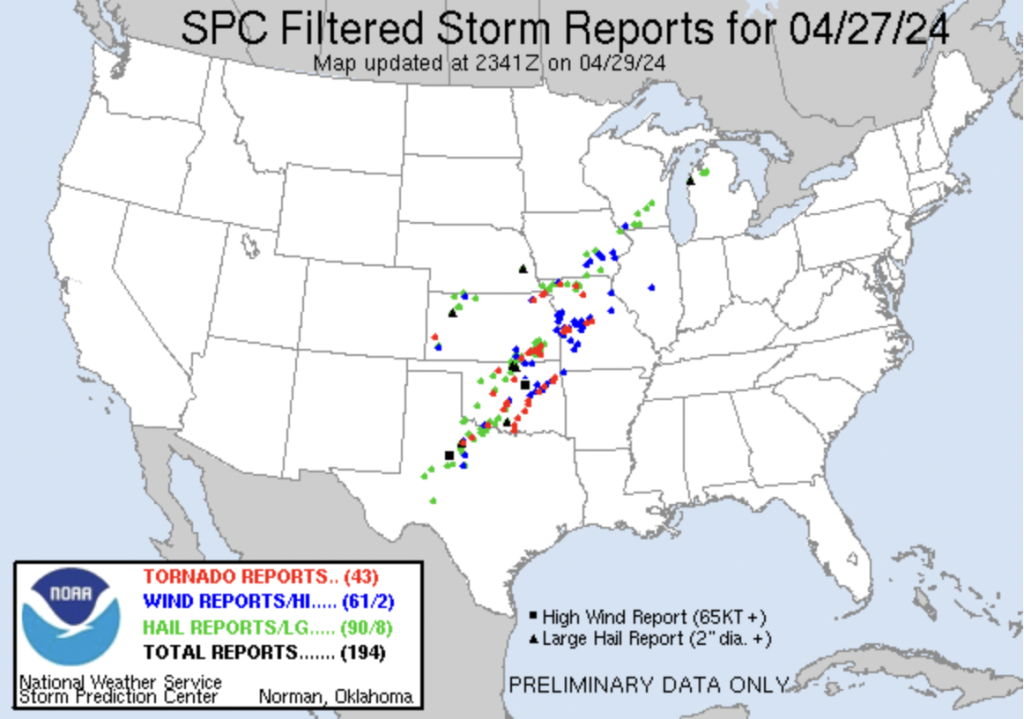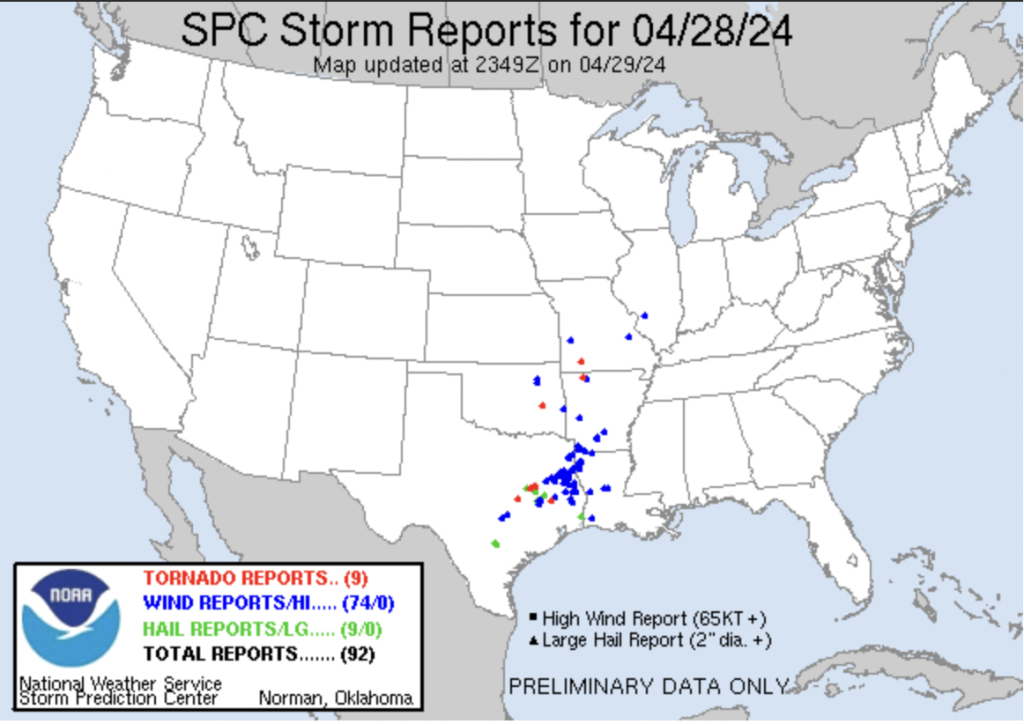A significant tornado outbreak ravaged parts of the central United States from April 26th to April 28th, 2024, leaving a trail of destruction and widespread damage. The outbreak, initiated by a slow-moving yet potent late April storm system, resulted in the formation of 100+ tornadoes along with severe weather conditions including excessive rainfall, flash flooding, and damaging hail and wind gusts.
The storm system, which spanned from late morning on April 27th through the early morning hours of April 28th, unleashed its fury primarily across Oklahoma and western North Texas as well as parts of Iowa.
Among the tornadoes documented, one of the most devastating was the EF-4 tornado that struck the Marietta, OK area. With estimated peak winds of 165 to 170 mph and a path length of 27 miles, this tornado left a swath of destruction as it traversed across Interstate 35, causing significant damage in Marietta before continuing its destructive path towards Lake Murray and Dickson.
Tragically, the Marietta tornado claimed one life, adding to the toll of casualties across the region. The Sulphur area was also heavily impacted, with an EF-3 tornado causing extensive damage and claiming another life. Additionally, the EF-3 tornado that struck near Spaulding and Holdenville resulted in two fatalities.
The outbreak was not limited to Oklahoma alone, as tornadoes were reported in other states, including Texas, Nebraska and Iowa. The severity of the event prompted the issuance of Public Information Statements and ongoing damage surveys by the NWS Norman office, with teams diligently assessing the impacted areas for tornado damage and intensity.
In addition to the tornadoes, the region experienced excessive rainfall, with some areas receiving between 4 to 8.75 inches, leading to severe flash flooding and river flooding, particularly in parts of Oklahoma and western North Texas. Hail up to 3 inches in diameter and severe wind gusts of up to 60 mph were also observed during the turbulent weather event.
The aftermath of the tornado outbreak underscores the importance of preparedness, vigilance, and community resilience in the face of natural disasters. As affected communities begin the process of recovery and rebuilding, support from local, state, and federal agencies, along with the resilience of the human spirit, will be crucial in rebuilding.
The NWS continues to monitor and assess the impacts of this tornado outbreak, providing updates and assistance to affected areas as they navigate the path to recovery. While the immediate impact of the storm is profound, the resilience and determination of communities affected by this tragedy serve as a beacon of hope in the face of adversity.



